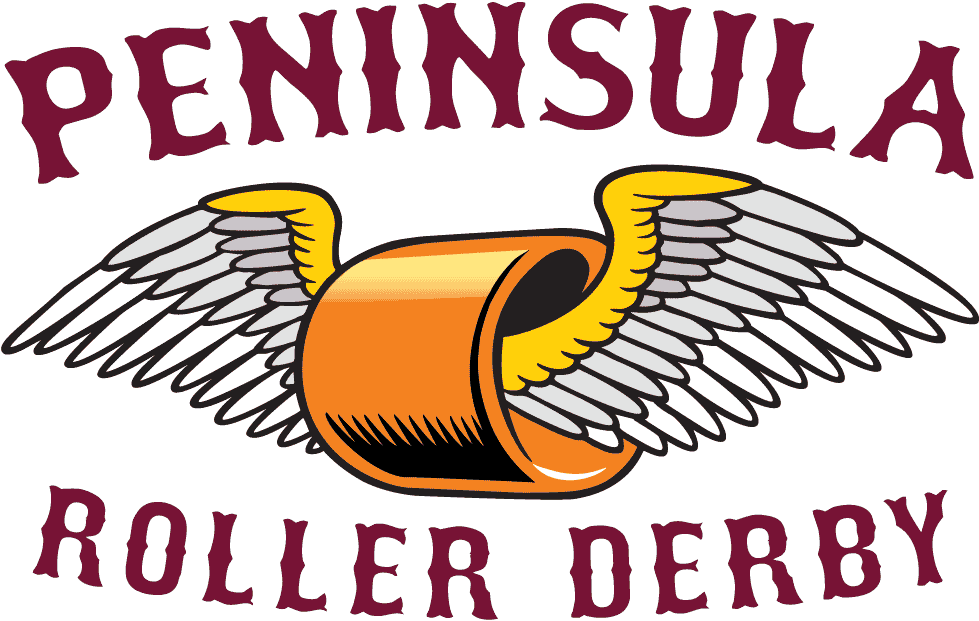So you have discovered Roller Derby. You are excited, full of energy and have a lot to learn. Most leagues have a program for those new to roller derby to teach new skaters the WFDTA minimum skills. But you have just learned about roller derby and, depending on the league’s structure, you may have to wait for the next session of their “freshmeat” to begin.
Check Facebook and/or email the league recruitment to find out about their process for incoming skaters (bootcamp/clinic/try-outs) and ask for advice/recommendations on gear. You may want to go out a buy and get a pair of really great skates- DON’T!!! Buy some starter skates (starting price is usually $100-150). They are basic. More expensive the skates have better components- many the plates. These will be more responsive to the shifting of your weight and will require greater control. While you are learning minimum skills you want your feet to be in control of your skates not your skates in control of you. When you feel confident skating that is when you can start dreaming of new skates. The most inexpensive way to upgrade starter skates is to replace the bushings or cushions with medium. This will make a huge difference and make weaving easier on your ankles.
Ask other skater on the league what kind of wheels they recommend. Every floor surface is different and certain wheels will be more suited. Surface + how much you weigh + skating confidence = what wheels will work best for you. If you want to work on skating skills outside look at outdoor wheels (78-84a)
DO NOT CHEAP OUT ON KNEE PADS! Take care of your knees. Ice them after practice even if they do not hurt. When you are new you will fall and practice falling more than other skaters. Find out if there are requirements on knee pads. Some league it does not matter but some require white caps. You want to know before you speed $70 on knee pads.
As you wait there are a few things you can do to give you a leg up that do not require any gear.
- CORE: work on strengthening your core. I’m not talking about doing crunches and/or sit-up every day. Find exercises to work your lats and lower back (side plank dips and super-mans are great but also planks which has a variety ways to hold) which crunches and sit-ups do not work. The strength of your core will affect your balance and your ability to absorb contact (hitting, pushing/driving, etc) and not fall
- BALANCE: all movement in derby can be broken down to shifting of your weight from one side to the other. Stride, crossovers, weaving, stopping, hitting, transitions are all fundamentally shifting weight. Work on balancing on one (1) leg. Aim for 30 seconds or more. Once that feels easy start balancing on one (1) leg with your eyes closed. Simplest way to practice this is when you are brushing your teeth or waiting for the microwave. Apart from that practice standing with two (2) feet on the ground shifting your weight so that you are standing with your weight on the outside edge of your feet, the inside and then inside on one and outside on the other. Being actively aware of where your weight is an important skill to have and will make learning new skills that much easier throughout your derby career
- HIPS: Derby requires skaters to learn to open and close their hips. There are many ways to ways to open your hips. Simple stretches are frog (nicked named “dirty derby” sometimes) on the ground or standing with your feet wide and turned out as far as comfortable and lowering yourself down flat surface (front is against the surface. If you are feeling stress in your knees you are not turning from your hips. Lay in your back in the same position, letting the weight of your legs to open your hips. Closing your hips is important for stopping (the many variations of plowing). Do a wall squat with feet pointed forward and hip width apart. Lift one leg. Keeping your weight on your grounding foot place the lifted leg down, leg straight, and foot turned in. DO NOT TRANSFER YOUR WEIGHT TO THIS LEG. Add pressure to the forward leg. You should feel yourself being pushed into the wall. Practice this on each side. The lower the squat the more this will help you later when you are no skates. Lower is always more stable…and if you fall there is less distance to fall.
- ARMS: Strategies used in playing roller derby changes and strong arms have increasingly become more important. Pushups (elbows out wide and elbows tucked in to your sides, triceps dips (on a bench or on ground-crap) and bear crawls (walking forward and backwards on your hands and feet). There are other that require weights if you want to go that way.
There are routines that can be found online- videos and diagrams. If you are a yoga person- do sun salutations as slowly as you can hold each position for at least 10 seconds (lowering from plank to Chaturanga Dandasana as slowly as you can) and all the different warrior poses working up to 30-60 seconds. Roller Derby Athletics is another resource. On my Bughouse blog I posted a 8 minute routine you can do when you get up (great way to start the day- patting yourself on the back for doing something) years ago.
For more information on joining visit PRG University and mail recruiting@peninsularollergirls.org
Join our Facebook page: Potentials
Bughouse Cuckoo #67
